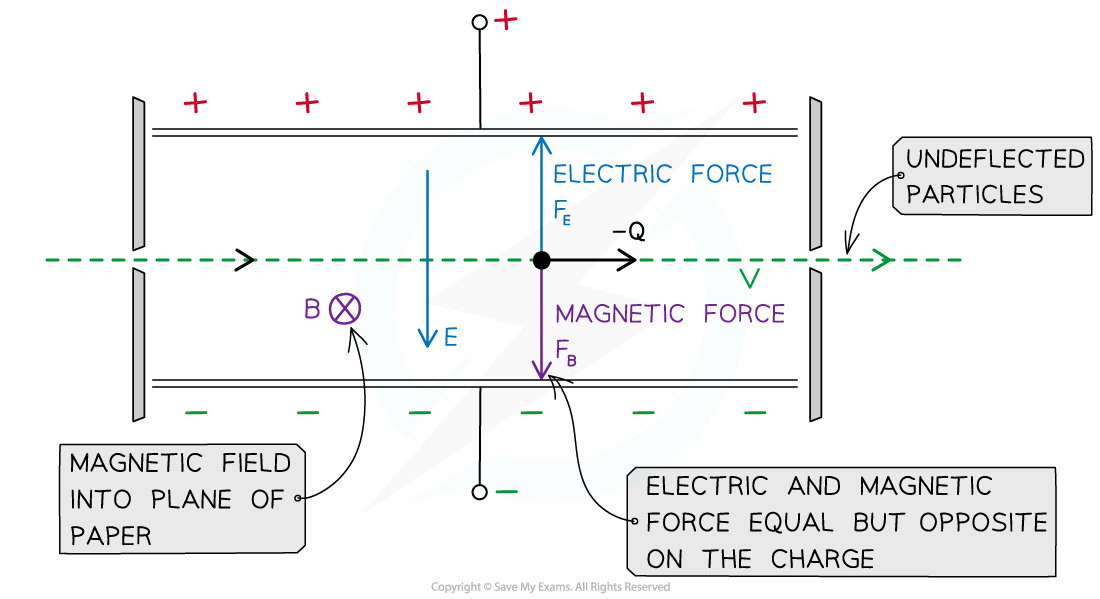Syllabus Edition
First teaching 2023
First exams 2025
Velocity Selection (Cambridge (CIE) A Level Physics) : Revision Note
Velocity selection
A velocity selector is defined as:
A device consisting of perpendicular electric and magnetic fields where charged particles with a specific velocity can be filtered
Velocity selectors are used in devices, such as mass spectrometers, to produce a beam of charged particles all travelling at the same velocity
A velocity selector consists of two oppositely charged parallel plates situated in a vacuum chamber
The plates provide a uniform electric field with strength E between them
There is also a uniform magnetic field with flux density B applied perpendicular to the electric field
If a beam of charged particles enters between the plates, they may all have the same charge Q but travel at different speeds
Velocity selector

The particles travelling at the desired speed v will travel through undeflected due to the equal and opposite electric and magnetic forces on them
The electric force does not depend on the velocity:
However, the magnetic force does depend on the velocity:
The magnetic force will be greater for particles which are travelling faster
To select particles travelling at exactly the desired speed v, the electric and magnetic force must therefore be equal, but in opposite directions
The resultant force on the particles at speed v will be zero, so they will remain undeflected and pass straight through between the plates
By equating the electric and magnetic force equations:
The charge Q will cancel out on both sides to give the selected velocity v equation:
Therefore, the speed v in which a particle will remain undeflected is found by the ratio of the electric and magnetic field strength
If a particle has a speed greater or less than v, the magnetic force will deflect it and collide with one of the charged plates
This would remove the particles in the beam that are not exactly at speed v
Note: the gravitational force on the charged particles will be negligible compared to the electric and magnetic forces and therefore can be ignored in these calculations
Worked Example
A positive ion travels between two charged plates towards a slit S
(a) State the direction of the electric and magnetic fields on the ion
(b) Calculate the speed of the ion emerging from slit S when the magnetic flux density is 0.50 T and the electric field strength is 2.8 kV m-1
(c) Which plate will the ion be deflected towards if the speed was greater than the speed in part (b)
Answer:
Part (a)
Step 1: Determine the direction of E field
Electric field lines point from the positive to negative to charge
Therefore, it must be directed vertically upwards
Step 2: Determine the direction of B field
Using Fleming’s left-hand rule:
The charge, or current I, is directed to the right
B is out of the page
Therefore, the force F is vertically downwards
Part (b)
Electric field strength, E = 2.8 kV m-1 = 2.8 × 103 V m-1
Magnetic flux density, B = 0.50 T
Part (c)
If the speed increases, the magnetic force must be greater because FB ∝ v
Since the magnetic force would direct the ion downwards in the direction of the field, the ion will be deflected towards the positive plate

You've read 0 of your 5 free revision notes this week
Sign up now. It’s free!
Did this page help you?
